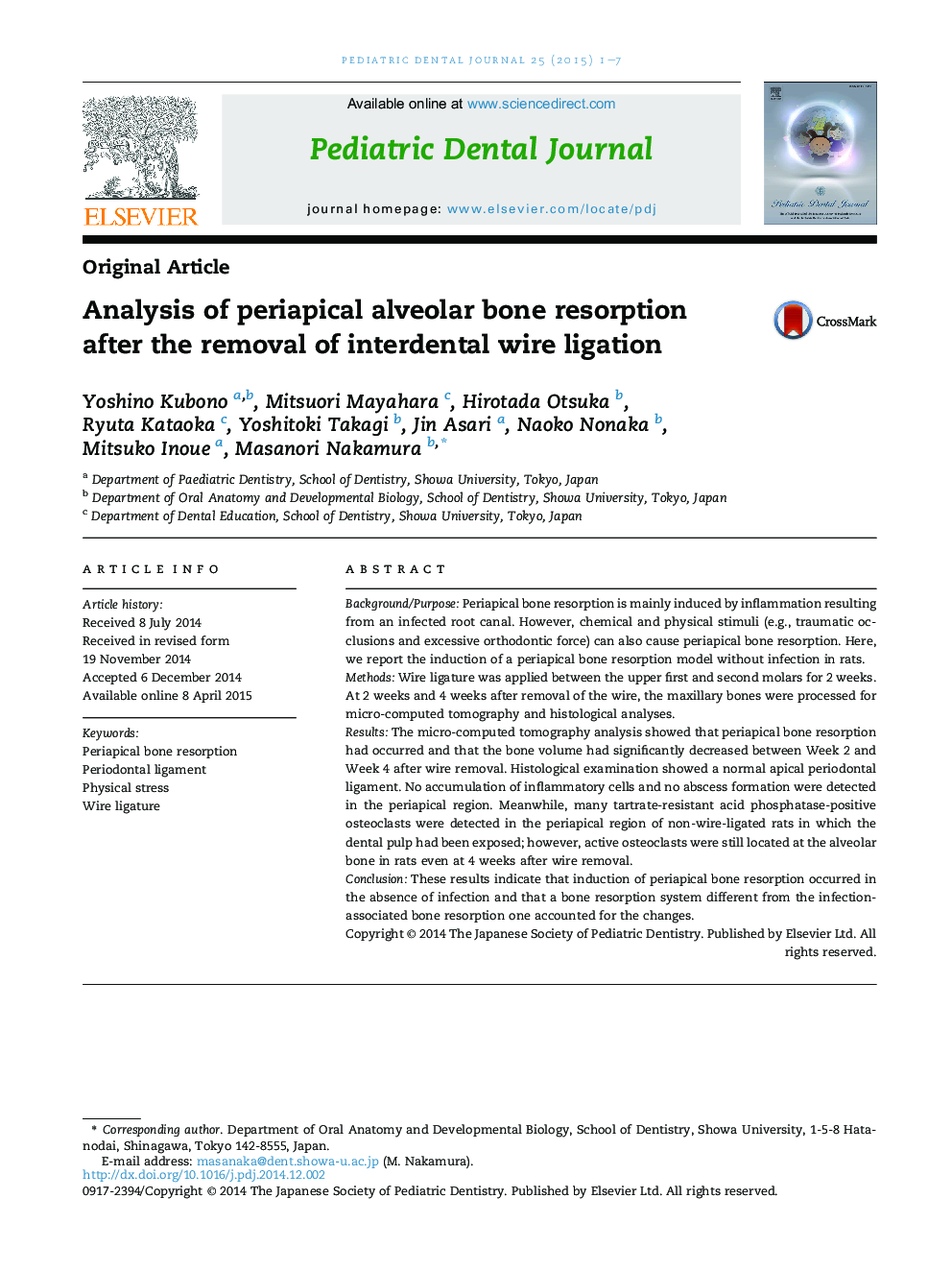| Article ID | Journal | Published Year | Pages | File Type |
|---|---|---|---|---|
| 3171612 | Pediatric Dental Journal | 2015 | 7 Pages |
Background/PurposePeriapical bone resorption is mainly induced by inflammation resulting from an infected root canal. However, chemical and physical stimuli (e.g., traumatic occlusions and excessive orthodontic force) can also cause periapical bone resorption. Here, we report the induction of a periapical bone resorption model without infection in rats.MethodsWire ligature was applied between the upper first and second molars for 2 weeks. At 2 weeks and 4 weeks after removal of the wire, the maxillary bones were processed for micro-computed tomography and histological analyses.ResultsThe micro-computed tomography analysis showed that periapical bone resorption had occurred and that the bone volume had significantly decreased between Week 2 and Week 4 after wire removal. Histological examination showed a normal apical periodontal ligament. No accumulation of inflammatory cells and no abscess formation were detected in the periapical region. Meanwhile, many tartrate-resistant acid phosphatase-positive osteoclasts were detected in the periapical region of non-wire-ligated rats in which the dental pulp had been exposed; however, active osteoclasts were still located at the alveolar bone in rats even at 4 weeks after wire removal.ConclusionThese results indicate that induction of periapical bone resorption occurred in the absence of infection and that a bone resorption system different from the infection-associated bone resorption one accounted for the changes.
